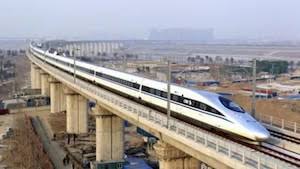The Indore-Manmad rail line is a landmark project by Indian Railways, aiming to boost connectivity between Madhya Pradesh and Maharashtra. Estimated to cost ₹8,931 crore, this 368-km railway line will shorten the distance between Indore and Mumbai by 171 km. Beyond improving travel times, this project holds the potential to transform India’s trade, tourism, and climate agenda.
1. Boost to Trade and Commerce
1.1. Shortened Routes, Faster Transport
The reduction in distance will accelerate the movement of goods between Central India and key western ports, enhancing supply chain efficiency. For industries in Madhya Pradesh, particularly textiles, agriculture, and manufacturing, this is a game changer. With the new line, goods can reach Mumbai’s port quicker, which is crucial for export-oriented industries.
1.2. Major Cost Savings for Businesses
The shorter route will reduce transportation costs significantly. Businesses will benefit from lower fuel and logistics expenses, enabling them to offer more competitive pricing in both domestic and international markets. This cost efficiency aligns with the government’s objectives of boosting exports and making Indian businesses globally competitive.
1.3. Economic Uplift for Regions Along the Route
The Indore-Manmad rail line will serve as a growth catalyst for regions along its path. By improving connectivity, it will attract investments and support industrial growth in underdeveloped regions. Additionally, the project is expected to create thousands of jobs during both the construction and operational phases, further stimulating local economies.

2. Promoting Tourism
2.1. Linking Major Tourist Hubs
The new railway will make key tourist spots in Madhya Pradesh and Maharashtra more accessible. Sites like Indore’s Rajwada, Omkareshwar, the Bhimbetka caves, and Maharashtra’s Ajanta and Ellora caves are likely to see a surge in tourism. The improved accessibility will be a boon for both heritage tourism and religious pilgrimage.
2.2. Boosting Domestic Tourism
Affordable, frequent, and faster travel will make it easier for tourists to explore the cultural and natural beauty of these states. The line will cater to budget travelers and those seeking weekend getaways, potentially increasing domestic tourism revenues.
3. Supporting India’s Climate Goals
3.1. Shift from Road to Rail Transport
Railways are a more environmentally friendly mode of transport compared to roadways. By shifting a significant portion of freight transport from trucks to trains, the Indore-Manmad project will help reduce India’s carbon emissions. Railways, being more fuel-efficient, will play a crucial role in lowering the country’s carbon footprint.
3.2. Reduction in Greenhouse Gas Emissions
The anticipated reduction in truck traffic will help reduce road congestion and vehicle emissions. The project aligns with India’s commitment to its Paris Agreement targets and goals of reducing greenhouse gas emissions. Fewer trucks on the road will also lead to less air pollution and noise, improving the overall environmental quality of the region.
3.3. Future-Proofing with Electrification
With Indian Railways’ continued push towards electrifying its network, it is expected that the Indore-Manmad line will eventually run electric trains. This will further reduce dependence on fossil fuels, cutting emissions even more. Electrified trains are more efficient and offer long-term sustainability, helping India achieve its renewable energy targets.
Conclusion
The ₹8,931 crore Indore-Manmad railway line is more than just an infrastructure project. It promises to revolutionize trade by cutting transport times and costs, while also unlocking the potential of regional tourism. Moreover, it will contribute significantly to India’s climate goals by promoting greener transport solutions. By integrating economic development with environmental responsibility, this project is a key pillar in India’s vision for sustainable growth.







